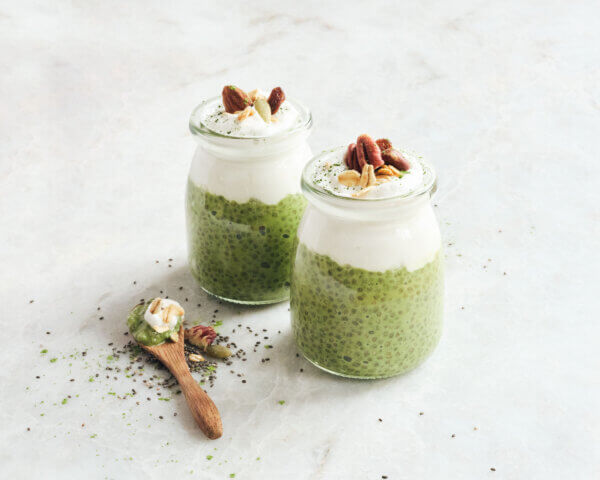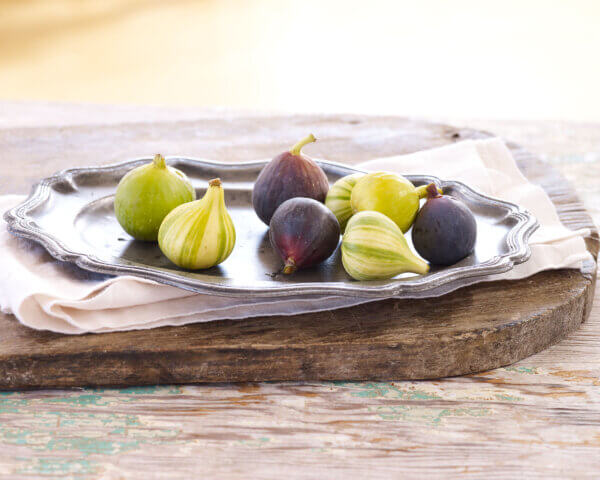101
Persimmons are a sweet, mild fruit that ripens in the fall. Though native to China, they can be grown in many parts of the world, including the Pacific Northwest. In colder climates, the leaves drop before the fruit is ready, creating a visually striking scene of bare branches adorned with orange lantern-like persimmons. If you’ve never eaten persimmons or find them intimidating, we’re here to provide some background on varieties as well as guidance on how to pick and use them

Overview
Persimmons are not only flavorful but also known to be rich in vitamins A and C, potassium, and fiber. They’re a really versatile fruit—enjoy them fresh, dried, or in a variety of sweet and savory dishes, including salads and desserts. Though there are many varieties, persimmons come in two main types: astringent and non-astringent.
Astringent (Hachiya)
Astringent persimmons, such as Hachiya, are acorn-shaped and typically larger and longer. Don’t eat them when they’re not fully ripe because they can be bitter and tannic. But once they ripen to a soft water-balloon-like consistency, the bitterness disappears, and they have a sweet jelly-like sweetness. Then they can be eaten as is, spread on toast, baked into bread, or made into jam. Ripe Hachiya persimmons can also be frozen, then thawed for a couple minutes and peeled to be enjoyed with a spoon. The high sugar content prevents them from fully freezing, resulting in a perfect sorbet-like texture. Hachiya is the most common persimmon used for hoshigaki, dried persimmons made following a traditional Japanese technique (see below for instructions).


Non-Astringent (Fuyu)
Non-astringent persimmons, such as Fuyu, are squat-shaped like a flat orange tomato. These can be eaten at any stage of ripeness. While the skin is technically edible, it can be tough and leathery and is best removed with a sharp knife or vegetable peeler. Non-astringent persimmons are crunchy when firm and lightly sweet—perfect shaved into salads. They hold up extraordinarily well in the fridge and can last for weeks, or even longer. As they ripen, Fuyu persimmons get softer and sweeter, eventually transforming into a jelly-like texture. Fully ripe persimmons are excellent for baking, smoothies, and jams.
How to Pick
When selecting persimmons, go for fruit that have a deep orange color and are smooth and free of blemishes. You can ripen persimmons by placing them stem-side-down on a plate at room temperature. They will gradually get softer and sweeter as they sit. Be patient! Persimmons have an extraordinary shelf life and can take weeks to fully ripen to their jelly-like state.


How to Prepare
Curious to try something new? You can use astringent Hachiya persimmons to make hoshigaki, a dried persimmon delicacy. The drying process gradually dissipates the astringent compounds and concentrates the sugars. Peel the persimmons while still firm and tie a string to the stem. Dip in boiling water for a few seconds to sterilize, then hang to dry in a sunny window. After one week, a delicate dried skin will form. At this point, you can begin gently massaging the fruit every few days. This will help them dry and ripen more evenly. They’ll gradually dry over the next 6 to 8 weeks, eventually forming a white sugary bloom on the surface. Once ready, they can be stored in an airtight container for several months. The texture is chewy and soft, and the flavor is sweet. Hoshigaki is classically served with tea, and they are equally delicious as an accoutrement to cheese or just as a sweet treat.
Non-astringent Fuyu persimmons can also be made into hoshigaki, though it is less common. We prefer to eat these fresh, such as in our Persimmon and Herb Salad.


Looking to learn more?
Our produce team is here to help! Come chat with us next time you’re shopping, whether you need help picking the right varietal or finding the perfect ripeness





